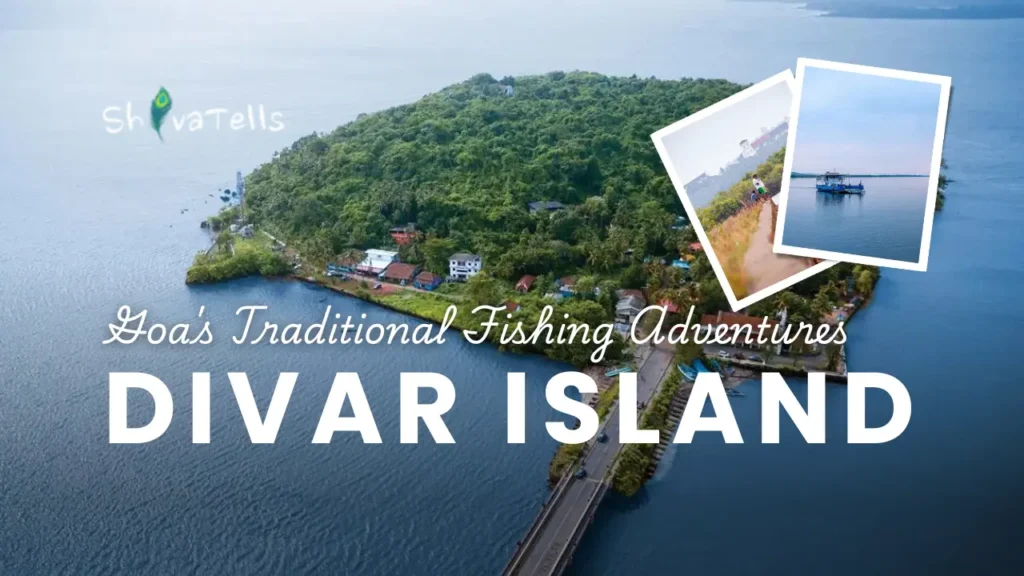Yo, what’s up, fam? I’m Shiva, and I’m bringing you some epic travel vibes from Goa! So, I decided to dive deep into the traditional fishing scene here, and let me tell you, it was totally different from what I expected.
Before we get started with Goa’s Traditional Fishing experiance story, here’s a brief overview of Goa travel essentials.

Table of Contents
Goa Travel Guide

Reaching Goa
Goa is well-connected to major cities in India and the world. You can fly into Dabolim Airport, which is the main airport in Goa. Alternatively, you can take a train or bus from Mumbai, Pune, or Bangalore.
Where to Stay
Goa offers a wide range of accommodation options to suit every budget and preference. From luxury resorts to budget-friendly guesthouses, you’ll find something that fits your style. Popular areas to stay include North Goa (Anjuna, Vagator, Baga) for a vibrant nightlife and South Goa (Palolem, Agonda) for a more peaceful atmosphere.

What Makes Goa Special

Goa is renowned for its stunning beaches, vibrant nightlife, delicious cuisine, and rich history. But there’s so much more to discover beyond the tourist hotspots. Here’s what makes Goa truly special:
- Tranquil Beaches: While Goa is famous for its bustling beaches, there are also plenty of secluded and peaceful spots to relax and enjoy the beauty of nature.
- Rich Heritage: Goa has a fascinating history, influenced by Portuguese colonization. Explore historic churches, forts, and museums to learn about its past.
- Delicious Cuisine: Goan cuisine is a fusion of Indian, Portuguese, and local flavors. Indulge in seafood delicacies, spicy curries, and sweet treats.
- Vibrant Culture: Goa’s culture is a colorful blend of traditions, festivals, and music. Experience the lively atmosphere during events like Carnival and the Sunburn Festival.
My Goa’s Traditional Fishing Experience
First up, I hit up Diwar Island with a local fisherman named Amrit. This dude knows the waters like the back of his hand. We hopped on his boat and cruised through the mangroves, which were crazy lush. I mean, I’ve seen mangroves before, but these were next level.
We got into the fishing action, and it was insane! Amrit taught me about different techniques like gill net fishing and round net casting. I even got to try my hand at it. And guess what? I caught a few fish! Boom!
But the real kicker was when we saw a massive crocodile lurking in the water. I’m talking like, 12 feet long! I was like, “Whoa, dude!” but Amrit was all cool about it. He said they’re pretty common around there, but don’t worry about it.
Next, I checked out Choraw Island to see a traditional fishing method called Manos. It was super interesting. They use sluice gates to trap fish when the tide changes. I watched as they cast their nets and hauled in a bunch of fish. Epic!
Overall, this trip was a total eye-opener. I learned so much about traditional fishing and the people who make a living from it. If you’re ever in Goa, you definitely need to check it out. It’s a whole different world!
Conclusion
Wrapping up my adventure in Goa, I can honestly say that exploring the traditional fishing methods was a game-changer. From learning new techniques to catching my own fish and even spotting a crocodile in the wild, this trip was full of surprises. It opened my eyes to a side of Goa that’s often overlooked by tourists. If you’re ever in Goa, step beyond the beaches and nightlife—dive into the rich culture and heritage of the local fishing communities. Trust me, it’s an experience you won’t forget!
Read Tribe Stories –
- Unknown Temple Art of Goa: Kaavi Art and Chitari Art
- Wancho Tribe: 3 Superheros of Arunachal Pradesh’s Patkai Hills
Watch Goa’s stories –
